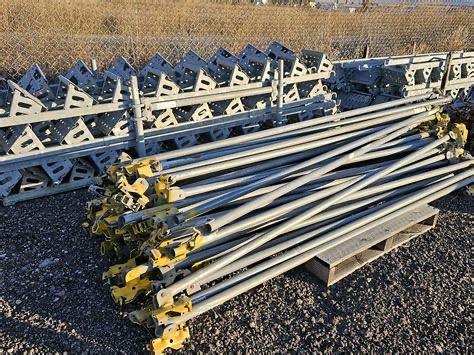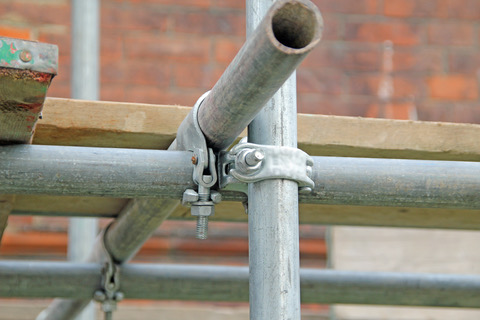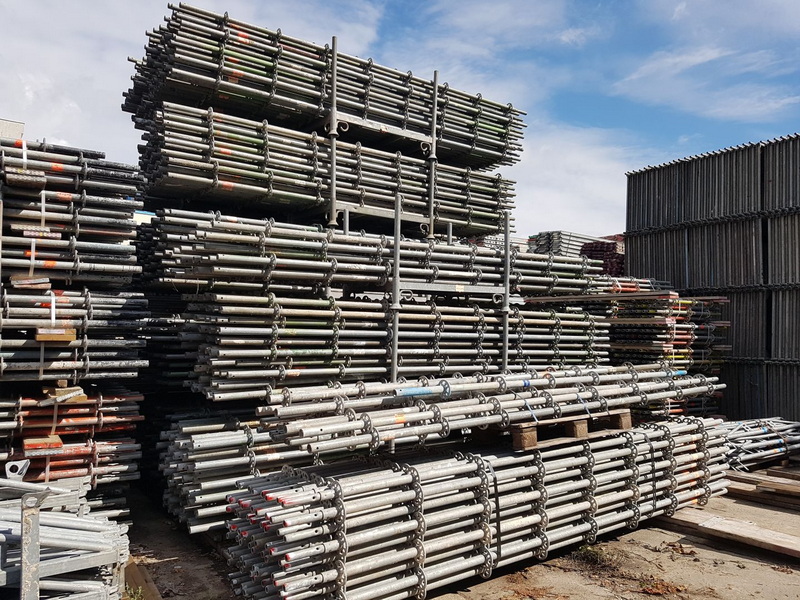Content Menu
● Introduction to System Scaffolding
● Advantages of System Scaffolding
● Safety Considerations for Used System Scaffolding
>> Inspection Checklist
>> Maintenance and Upkeep
● Buying Used System Scaffolding: Tips and Considerations
>> Research the Seller
>> Check for Compliance
>> Inspect Before Purchase
>> Warranty and Support
>> Price Comparison
● Additional Considerations for Used System Scaffolding
>> Environmental Factors
>> Training and Education
>> Legal and Regulatory Compliance
>> Insurance and Liability
>> Long-Term Costs
● Case Studies: Successful Use of Used System Scaffolding
● Conclusion
● FAQ
>> 1. What are the key safety features to look for in used system scaffolding?
>> 2. How often should I inspect used system scaffolding?
>> 3. Can I modify used system scaffolding to fit specific project needs?
>> 4. What are the benefits of buying used system scaffolding compared to new?
>> 5. How do I ensure compliance with safety regulations when using used system scaffolding?
● Citations:
When considering the purchase of used system scaffolding, safety is a paramount concern. System scaffolding is renowned for its stability and adherence to safety standards, but buying used equipment requires careful evaluation to ensure it remains safe for use. In this article, we will explore the safety aspects of buying used system scaffolding, discuss how to inspect and maintain it, and provide guidance on making an informed purchase.

Introduction to System Scaffolding
System scaffolding is a type of scaffolding that is designed to be modular and highly adaptable. It is composed of standardized components that can be easily assembled and disassembled, making it ideal for a wide range of construction projects. System scaffolding is known for its strength, stability, and ease of use, which are crucial factors in ensuring workplace safety.
Advantages of System Scaffolding
1. Modularity: System scaffolding is highly modular, allowing it to be easily customized for different projects.
2. Stability: It is designed to provide a stable working platform, reducing the risk of accidents.
3. Compliance with Safety Standards: System scaffolding meets and often exceeds federal and local safety regulations, such as those set by OSHA.
Safety Considerations for Used System Scaffolding
When purchasing used system scaffolding, it is essential to conduct a thorough inspection to ensure that the equipment is safe for use. Here are some key safety considerations:
Inspection Checklist
1. Structural Integrity: Check for any signs of damage, rust, or wear on the scaffolding components.
2. Load Capacity: Verify that the scaffolding can support the intended load without exceeding its capacity.
3. Guardrails and Fall Protection: Ensure that guardrails are securely in place and that personal fall arrest systems are available if needed.
4. Proper Assembly: Confirm that the scaffolding is assembled correctly according to the manufacturer's instructions.
Maintenance and Upkeep
Regular maintenance is crucial to extend the lifespan of used system scaffolding and ensure it remains safe. This includes:
1. Cleaning: Regularly clean the scaffolding to prevent rust and corrosion.
2. Storage: Store components in a dry, secure location when not in use.
3. Inspections: Conduct regular inspections to identify and address any issues promptly.

Buying Used System Scaffolding: Tips and Considerations
Research the Seller
Ensure that the seller is reputable and provides documentation for the scaffolding's history, including any maintenance records. A reputable seller will also be transparent about any repairs or replacements made to the equipment.
Check for Compliance
Verify that the scaffolding complies with current safety regulations and standards. This includes ensuring that all components meet or exceed the requirements set by local and federal authorities.
Inspect Before Purchase
Always inspect the scaffolding personally or hire a professional to do so before making a purchase. This step cannot be overstated, as it is crucial for identifying any potential safety hazards.
Warranty and Support
Check if any warranty or support is available from the seller. While used equipment often does not come with a warranty, some sellers may offer limited support or maintenance services.
Price Comparison
Compare prices from different sellers to ensure you are getting a fair deal. Consider not only the cost of the scaffolding but also any additional expenses for maintenance or repairs.
| Factor | New Scaffolding | Used Scaffolding |
| Cost | Higher | Lower |
| Safety | Guaranteed | Requires Inspection |
| Warranty | Available | Often Not Available |
Additional Considerations for Used System Scaffolding
Environmental Factors
Consider the environmental conditions in which the scaffolding will be used. For example, scaffolding exposed to harsh weather conditions may require additional protective measures.
Training and Education
Ensure that all personnel using the scaffolding are properly trained and educated on its safe assembly, use, and disassembly. This includes understanding how to identify potential hazards and report them.
Legal and Regulatory Compliance
Stay informed about local and national regulations regarding scaffolding safety. Compliance with these regulations is not only legally required but also essential for ensuring a safe working environment.
Insurance and Liability
Check your insurance coverage to ensure it includes liability for accidents involving scaffolding. Understanding your insurance policy can help mitigate financial risks associated with accidents.
Long-Term Costs
While used scaffolding may offer initial cost savings, consider the long-term costs of maintenance and potential repairs. These expenses can add up over time and impact your overall budget.
Case Studies: Successful Use of Used System Scaffolding
Several construction companies have successfully utilized used system scaffolding for their projects, achieving significant cost savings while maintaining safety standards. For example, a company in the UK purchased used scaffolding for a large-scale renovation project, which allowed them to allocate more resources to other aspects of the project while ensuring worker safety.
Conclusion
Buying used system scaffolding can be a cost-effective option for construction projects, but it requires careful consideration of safety factors. By conducting thorough inspections, ensuring compliance with safety standards, and maintaining the equipment properly, you can minimize risks and ensure a safe working environment. Always prioritize safety when deciding to buy used system scaffolding.

FAQ
1. What are the key safety features to look for in used system scaffolding?
When purchasing used system scaffolding, look for features such as sturdy guardrails, secure connections between components, and a stable base. Ensure that all parts are free from damage and rust.
2. How often should I inspect used system scaffolding?
Regular inspections should be conducted daily before use and after any significant changes in the scaffolding setup. Additionally, a comprehensive inspection should be performed at least once a month.
3. Can I modify used system scaffolding to fit specific project needs?
While system scaffolding is modular and adaptable, any modifications should be made in accordance with the manufacturer's instructions and safety guidelines. Improper modifications can compromise safety.
4. What are the benefits of buying used system scaffolding compared to new?
Buying used system scaffolding can offer significant cost savings while still providing a reliable and safe working platform if properly inspected and maintained.
5. How do I ensure compliance with safety regulations when using used system scaffolding?
Ensure that the scaffolding meets all relevant safety standards by consulting local regulations and OSHA guidelines. Regular inspections and proper assembly are also crucial for compliance.
Citations:
[1] https://safetyculture.com/topics/scaffolding-safety/
[2] https://www.scaffoldingsolutions.com/articles/recent-scaffolding-safety-guidelines/
[3] https://blog.csdn.net/weixin_39278265/article/details/123561842
[4] https://www.scaffoldingsolutions.com/articles/why-system-scaffolding-is-the-safest-scaffolding/
[5] http://www.osha.gov/etools/scaffolding/general-requirements
[6] https://developers.google.com/search/docs/appearance/structured-data/product-snippet?hl=zh-cn
[7] https://www.dir.ca.gov/dosh/dosh_publications/GuideForSupportedScaffolds.pdf
[8] https://safety.uchicago.edu/occupational-health-safety/occupational-safety/scaffold-safety/
[9] https://www.sohu.com/a/358231210_100012111
[10] https://www.scaffoldingsolutions.com/articles/11-scaffolding-safety-tips/
[11] https://www.tdi.texas.gov/tips/safety/scaffolding.html






















